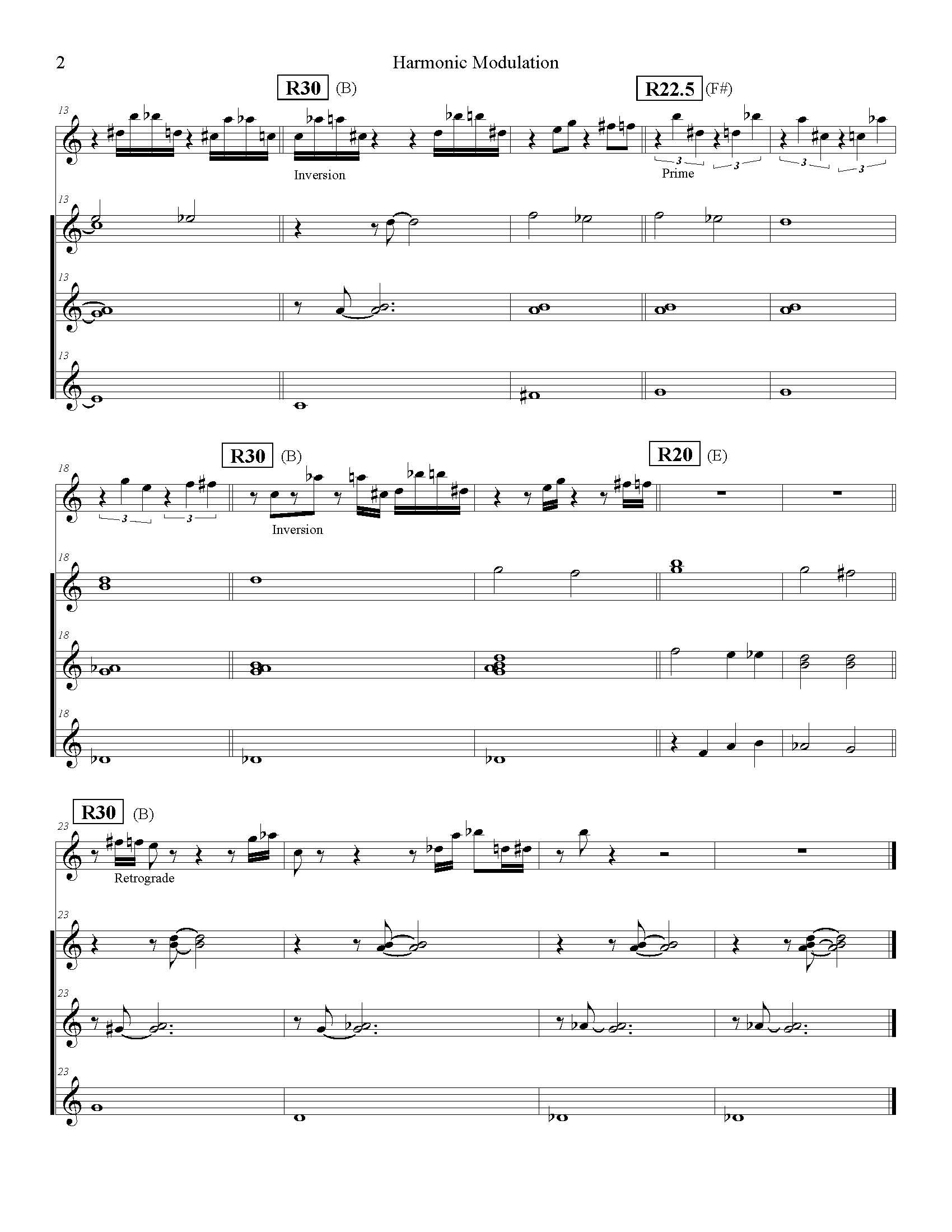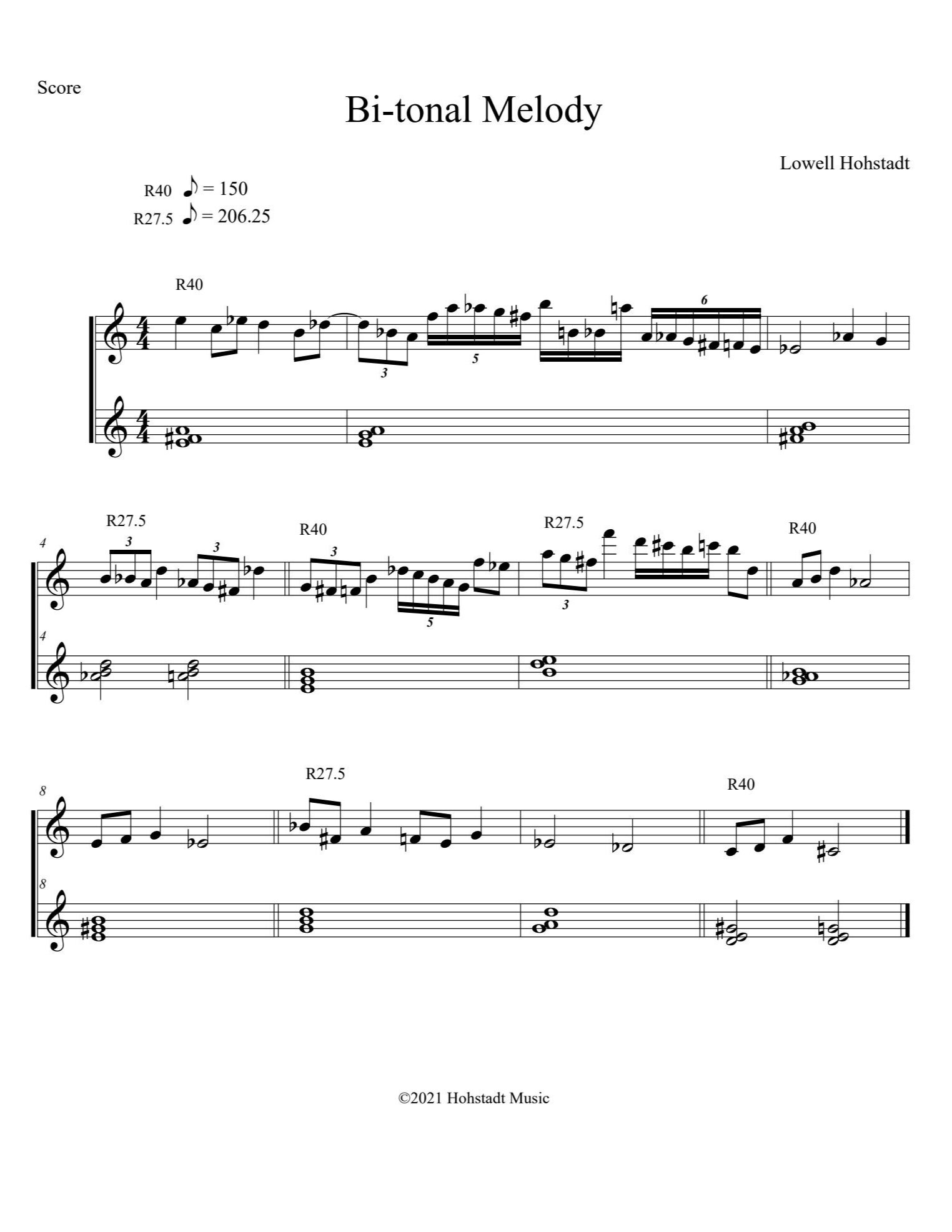IF2 Chord Modulation, with Serial (P,R,I,RI)
This is an experiment in modulation between the three overtone series ‘keys’ of R30 (B), R20 (E), and R22.5 (F#). There are chord progression sequences that can be made within a single overtone scale, as shown by previous experiments. In this experiment, however, I seek to expand the harmonic possibilities by essentially creating a tonic, dominant, and subdominant framework.
In addition to the above concept, I added a 12-note chromatic line, developed with the common serialism components of Prime, Retrograde, Inversion, and Retrograde/Inversion.
As the keys shift, the tempi and 12-tone lines also shift. Since the 12-tone line is derived directly from the same overtone series of its underlying harmonies, we see that serialism and harmony can co-exist.
In this work, tempo, harmony, and chromatic serialism are compatible and congruent.




